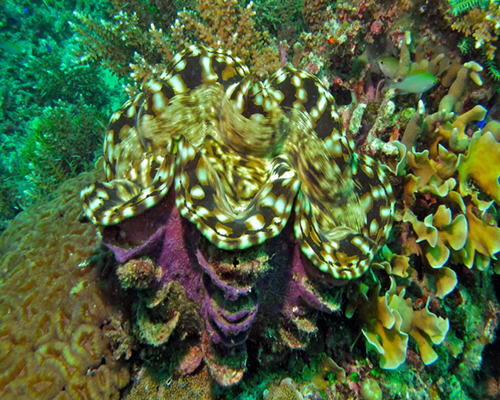
Tridacna squamosa, commonly known as the “squamose clam,” “fluted clam,” or “giant clam,” is a species of giant clam found in the Indo-Pacific region. It is one of the larger species of giant clams and is prized for its ornamental value in marine aquariums due to its distinctive appearance.
Physical Appearance:
Tridacna squamosa is known for its large, fluted shell with distinctive vertical ridges or scutes. The mantle, the fleshy part of the clam, is often brightly colored with a range of hues, including blues, greens, browns, and yellows. These colors can vary among individuals and may have patterns or spots.
- Size: Tridacna squamosa is a relatively large species of giant clam. They can grow up to 24 inches (60 cm) or more in length and weigh several kilograms.
- Shell: The shell of Tridacna squamosa is large, thick, and heavy, typical of giant clams. It has a distinctive shape with prominent fluted or scalloped edges. The color of the shell varies, but it is often brown or green, and it may have intricate patterns and markings.
- Mantle: The mantle of Tridacna squamosa clams is known for its striking coloration and patterns. The mantle can be various shades of blue, green, brown, or even purple, with intricate designs and iridescence, making them highly sought after for their aesthetic appeal.
- Symbiotic Relationship: Tridacna squamosa, like other giant clams, has a symbiotic relationship with photosynthetic zooxanthellae, which are algae that reside within their tissues. These algae perform photosynthesis, providing the clam with essential nutrients while benefiting from the protection and access to nutrients provided by the clam.
- Habitat: Tridacna squamosa clams are typically found in shallow, tropical reef environments with clear and well-illuminated waters. They rely on sunlight for their symbiotic algae to carry out photosynthesis.
- Conservation: Giant clams, including Tridacna squamosa, are vulnerable to overexploitation and habitat degradation. Many species of giant clams are protected, and there are regulations in place to prevent their decline.
